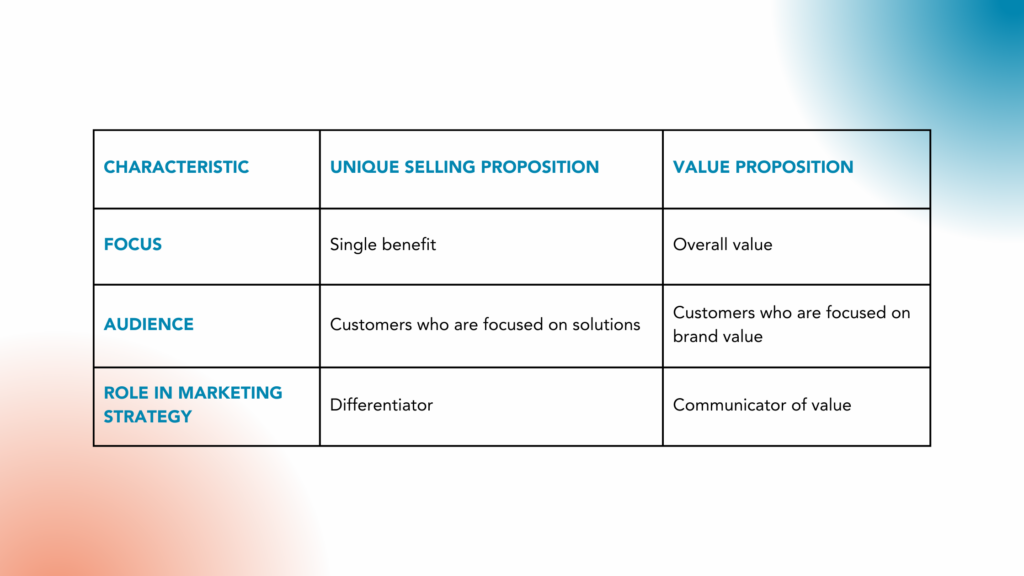How many direct competitors do you have? How many adjacent? Is your industry full of manufacturers, suppliers, and providers? And what are they all saying about themselves?
They’re saying a lot, and often. Just as you are. This is why standing out from the crowd is no longer a luxury; it’s a necessity. Differentiating messaging, the cornerstone of effective branding and marketing, lies at the heart of this endeavor. It’s about crafting unique and compelling communications that resonate with your target audience and establishing your brand as distinct and memorable.
The Value of Value-Led Branding
Value-led branding, a strategic approach emphasizing the principles and beliefs guiding a company’s actions, has emerged as a powerful differentiator.
According to a study by Consumer Goods Technology, 82% of consumers prefer to buy from companies that align with their values.
Value-led branding not only resonates with consumers but also drives business performance. A study by McKinsey & Company found that companies that prioritize purpose and values outperform their rivals in the long term.
Crafting Differentiating Messaging: A Step-by-Step Guide
1. Know Your Audience: Dive into the minds of your target audience to understand their needs, aspirations, and pain points. Identify their demographics, interests, and online behavior to tailor your messaging accordingly.
2. Uncover Your Brand’s Essence: Yes, “essence”. This means discovering what makes your brand unique. Identify your core values, competitive advantages, and the impact you want to make on the world. This understanding will form the foundation of your differentiating messaging. Think outside the box when it comes to presenting your positioning.
3. Articulate Your Unique Selling Proposition (USP) and Value Proposition: Craft clear, concise, and memorable statements that tell customers why they should choose your brand over others.
Digging into what that actually means: A value proposition is a communicator of overall value: a statement that says “we help you do X.” A USP is a differentiator: a statement that says “we lead the market because of X.” See the difference? Here it is in play:
- Warby Parker
- USP= Try on five pairs of glasses for free at home.
- VP = Making it easy and affordable to find glasses that you love.
- Stitch Fix
- USP = Personal style, delivered
- VP = Helping busy people find their personal style.
- Tom’s
- USP = With every pair you purchase, Tom’s will give a pair to a child in need. One for One.
- VP = Ethical and sustainable footwear.
As you can see, the USP focuses on a single benefit while the VP focuses on the overall value provided to the customer. And here’s a chart to help you remember how to build these statements:

4. Embrace Storytelling: Leverage the power of storytelling to capture attention and connect with your audience. Share narratives that showcase your brand’s values, impact, and ability to solve problems. Stories, particularly when told via video, make messaging more relatable and impactful.
5. Adopt a Conversational Tone: Ditch jargon and formality; instead, adopt a conversational style that resonates with your target audience. Speak their language, use humor where appropriate, and create a dialogue rather than a monologue.
6. Ensure Consistency and Coherence: Maintain a consistent brand voice and messaging across all touchpoints, from your website and marketing materials to your social media presence and customer interactions. This consistency reinforces your brand identity and builds trust.
7. Evolve with the Times: As consumer preferences and market trends change, adapt your differentiating messaging accordingly. Regularly review and refine your communications to ensure they remain relevant, fresh, and aligned with the evolving landscape.
Differentiating Success: Examples of Brands That Go All In
- Patagonia: With a focus on environmental responsibility and social justice, Patagonia has carved a niche for itself in the outdoor apparel industry. Their messaging consistently emphasizes their commitment to sustainability and ethical sourcing, resonating with consumers who share these values.
- Dove: Dove’s “Real Beauty” campaign challenged traditional beauty standards and celebrated diversity, making them stand out in the cosmetics industry. Their messaging empowered women to embrace their unique beauty, resonating with a broad audience.
- Airbnb: Airbnb has carved a niche in the travel industry by emphasizing authentic experiences and community building. Their messaging consistently highlights the unique homes, local hosts, and cultural connections offered by their platform, appealing to travelers seeking a more immersive travel experience.
- GoPro: GoPro has become synonymous with action-packed adventures and capturing life’s unforgettable moments. Their messaging consistently emphasizes the durability, versatility, and ability of their cameras to capture extreme experiences, resonating with adrenaline junkies and adventurous individuals.
- The Body Shop: The Body Shop’s emphasis on natural ingredients, ethical sourcing, and community activism has differentiated them in the cosmetics industry. Their messaging consistently promotes sustainability, social responsibility, and empowerment, resonating with consumers who value these principles.
Dare to be Different
Differentiating messaging is an art and a science. It requires creativity, insight, a deep understanding of your brand and your target audience, and the willingness to adapt and evolve. By embracing these principles, you can craft compelling communications that set your brand apart, capture attention, drive lasting success, and forge a loyal following.
